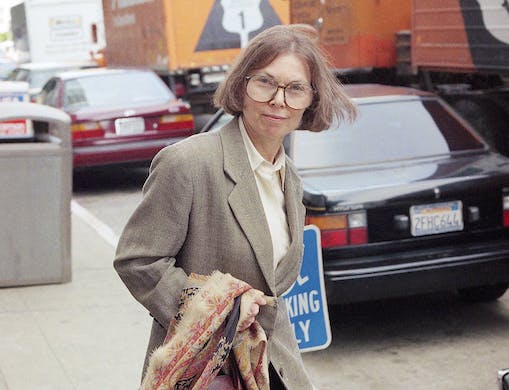Janet Malcolm Hides Behind Photography
Photographs in this book are evasions as much as they are disclosures. Since Malcolm cannot trust memory, she analyzes photographs, which, paradoxically, can only come to full life by the use of her memory.

‘Still Pictures: On Photography and Memory’
By Janet Malcolm
Farrar, Straus and Giroux, 176 pages
This odd book is not really about photography or about memory. It contains many photographs and includes many memories, but the late Janet Malcolm provides no sustained discussion of memory or photography, though in other essays and books she liked to attack autobiography and biography as epistemologically anemic and favored photographs as more reliable.
This book is a fitful, if sometimes eloquent, effort to recount certain episodes of Malcolm’s own life, including her emigration to this country with her Czech parents. But she cannot get on with autobiography without a photograph: “Unfortunately, there are no photographs of the apartment my mother remembered with such fond vividness,” Malcolm laments. All she seems to really believe in are photographs, which is perhaps why she took so many herself and why she could never write a complete autobiography.
I call this an odd book because of its fetishization of photographs, as if only they can be trusted to tell the truth. Imagine if we did have photographs of her mother’s apartment: Would they adequately represent her vivid memories?
As fixed and seemingly dispositive as photographs appear, they are, as Susan Sontag pointed out in “On Photography,” the product of points of view, of lighting, framing, and they are not the pieces of reality that they are so often taken for. In some instances, it can even be said that photographs lie. Janet Malcolm knows all this, yet she often writes as if she does not.
Photographs in this book are evasions as much as they are disclosures. Since Malcolm cannot trust memory, she analyzes photographs, which, paradoxically, can only come to full life by the use of her memory. Yet photography rules: “The events of our lives are like photographic negatives. The few that make it into the developing solution and become photographs are what we call our memories.”
Like all similes, or analogies, however brilliantly conceived, Malcolm’s distort. The idea that our lives can be recounted as only photographic negatives seems extraordinarily restrictive, as if to truncate efforts to go beyond Malcolm’s negativity.
Photographs, as precious as they are, constantly disappoint, and Malcolm herself has to resort to that dreaded thing, memory: “Although this is a black-and-white photograph, I know the colors of the clothes Marie and I are wearing. It’s Easter Sunday. We are in our new spring outfits—for which we were taken shopping every year—to wear in the Easter Parade on Fifth Avenue. I had chosen a navy-blue suit and a green suede handbag and green hat; I remember feeling proud of what I thought of as my startlingly original choice of green with dark blue.”
It’s nice to have the photograph, but it pales in comparison to Malcolm’s engaging language. So much has to be added to still pictures, no matter how evocative, in order to tell a story.
Given her distrust of biography, Malcolm never does attempt a complete narrative. The closest she comes to a full-length autobiographical episode occurs in a chapter on her 10-year legal battle with psychoanalyst Jeffrey Mason, in which she emerged triumphant by establishing she did not defame him in a New Yorker article.
Reviewers laud “Still Pictures” as the “world’s most elegant annotated photo album,” and extol her masterful sentences and “confounding glimpse of an extraordinary life.” In an introduction, Ian Frazier mentions an essay in which “she listed a few of the hazards involved in writing about oneself, such as the desire to seem like an interesting person, or the conflict between self-love and journalistic objectivity.”
What to make of the high praise for her and what seems to me like a dodge — almost a failure of nerve — to do the work of memoir or biography? Aren’t self-love and journalistic objectivity a false dichotomy? It makes out Malcolm to be the one with more integrity than the autobiographers and biographers she excoriates, but how is her alternative better?
At Malcolm’s best, as her daughter notes in an Afterword, Malcolm “found a different, characteristically oblique way” to creep into her own life through still pictures and an account of herself, as her daughter puts it, of the “self lurking behind the camera lens.” That approach “through the viewfinder with her” sometimes approaches the objectivity that eludes most of us.
Mr. Rollyson is the author of “Confessions of a Serial Biographer.”

